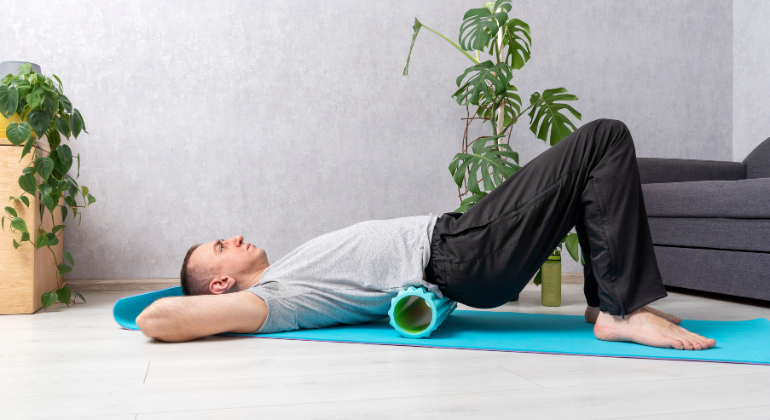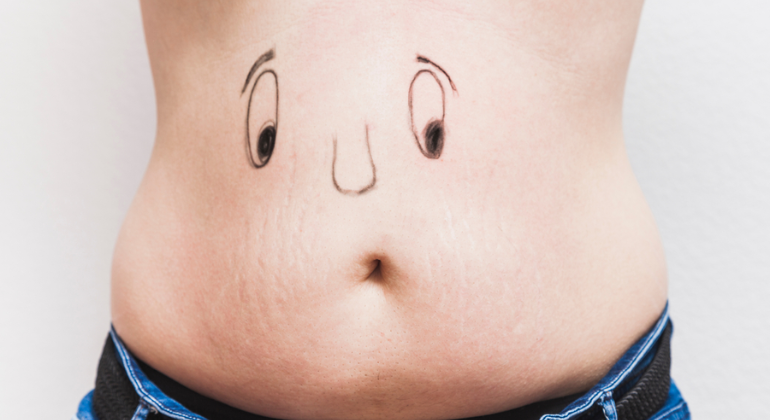Chronic low back pain issue is affecting millions of individuals worldwide, it limits mobility and reduce quality of life. Although in severe circumstances, medication and expert physiotherapy could be required, including focused workouts into your program can be a great approach to control severe pain, increase mobility, and strengthen your back. We'll explore chronic back …
Chronic low back pain issue is affecting millions of individuals worldwide, it limits mobility and reduce quality of life. Although in severe circumstances, medication and expert physiotherapy could be required, including focused workouts into your program can be a great approach to control severe pain, increase mobility, and strengthen your back.
We’ll explore chronic back pain exercises designed to relieve discomfort and restore functionality in this blog. These exercises are easy and can be done at home targeting specific causes of chronic back pain including sciatica or herniated discs.
Top Exercises to Relieve Chronic Back Pain at Home

Chronic back pain exercises aimed at relieving discomfort by strengthening the muscles supporting your spine and increasing flexibility. Regular exercise will help you recover mobility and control over discomfort.
1. Cat-Cow Stretch
Target Area: Spine and Lower Back
How to Perform:
- Starting on your hands and knees in a tabletop position.
- Inhale as you arch your back, lifting your head and tailbone upward (cow position).
- Exhale as you round your back, cat stance tucking your chin and pelvis inward.
- Go carefully through this series 8 to 10 times.
Why It Helps:
The cat-cow stretch boosts spinal flexibility and releases lower back stress, making it excellent exercise for chronic pain
2. Child’s Pose
Target Area: Lower Back and Hips
How to Perform:
- Get down on the floor and seat back on your heels.
- Straight forward your arms and lower your chest toward the floor.
- Breathing deeply, hold the position for twenty to thirty seconds.
- Repeat 2–3 times.
Why It Helps:
This stretch slowly elongates the spine, helps in decompression and stretches back muscles therefore releasing tension in the lower back and encouraging relaxation.
3. Glute Bridges
Target Area: Lower Back, Glutes, and Core
How to Perform:
- Lie flat on your back with your knees bent and feet flat on the floor, hip-width apart.
- Engage your core and lift your hips toward the ceiling until your body forms a straight line from shoulders to knees.
- Hold the position for 5 seconds, then lower back down slowly.
- Perform 10–12 repetitions for 2–3 sets.
Why It Helps:
Glute bridges strengthen the lower back, glutes, and core, providing better support for your spine and reducing chronic pain.
Simple and Effective Home Exercises for Lower Back Pain Relief

Among those with chronic back problems, one of the most often voiced complaints is lower back pain. These home exercises for lower back pain relief are easy to do and are quite successful.
1. Single Knee-to-Chest Stretch
Target Area: Lower Back and Hips
How to Perform:
- Lie on your back with your knees bent and feet flat on the floor.
- Pull one knee toward your chest while keeping the other foot on the ground.
- Hold the stretch for 20 seconds, then switch legs.
- Perform 2–3 repetitions per leg.
Why It Helps:
This stretch relieves tension in the lower back and improves flexibility in the hips, reducing pain and stiffness.
2. Pelvic Tilts
Target Area: Lower Back and Abdominals
How to Perform:
- Lie on your back with your knees bent and feet flat.
- Gently tilt your pelvis upward, flattening your lower back against the floor.
- Hold the position for 5 seconds, then release.
- Repeat 10–15 times.
Why It Helps:
Pelvic tilts strengthen the lower back and abdominal muscles, improving posture and reducing pain.
3. Seated Spinal Twist
Target Area: Spine and Hips
How to Perform:
- Straightly extend your legs on the floor.
- Bend your right knee and lay your right foot outside your left thigh.
- Position your left elbow outside your right knee and your right hand on the floor behind you.
- Turn softly to the right, holding for twenty seconds.
- Repeat on the other side.
Why It Helps:
This exercise improves spinal mobility and reduces tension in the lower back.
How Physiotherapy Helps Manage Chronic Back Pain Effectively
Physiotherapy combines targeted exercises and techniques to address the root causes of chronic back pain. Regular practice under the guidance of a professional can provide lasting relief.
1. Bird Dog Exercise
Target Area: Lower Back and Core
How to Perform:
- Start on your hands and knees in a tabletop position.
- Extend your right arm forward and your left leg back, keeping your spine neutral.
- Hold for 5 seconds, then return to the starting position.
- Alternate sides, performing 8–10 repetitions per side.
Why It Helps:
This exercise strengthens the core and stabilizes the lower back, reducing the strain that contributes to chronic pain.
2. Wall Sits
Target Area: Lower Back and Glutes
How to Perform:
- Stand with your back against a wall and your feet shoulder-width apart.
- Slide down the wall until your knees form a 90-degree angle.
- Hold for 10–15 seconds, then return to standing.
- Repeat 2–3 times.
Why It Helps:
Wall sits engage the muscles in your lower back and glutes, improving strength and stability.
3. Hamstring Stretches
Target Area: Hamstrings and Lower Back
How to Perform:
- Sit on the floor with your legs extended straight.
- Reach forward toward your toes, keeping your back straight.
- Hold for 20–30 seconds, then release.
- Perform 2–3 repetitions.
Why It Helps:
Tight hamstrings can contribute to lower back pain. Stretching them reduces tension and promotes spinal alignment.
Best Stretches to Relieve Herniated Disc Pain at Home Safely
Herniated discs are a common cause of chronic back pain. These stretches provide relief by reducing pressure on the affected nerves.
1. Cobra Stretch
Target Area: Spine and Abdominals
How to Perform:
- Lie face down with your hands under your shoulders.
- Press into your hands to lift your chest, keeping your pelvis on the floor.
- Hold for 5–10 seconds, then lower back down.
- Perform 8–10 repetitions.
Why It Helps:
This stretch gently extends the spine, relieving pressure on herniated discs.
2. Child’s Pose (Extended)
Target Area: Lower Back and Hips
How to Perform:
- Start on your hands and knees, then sit back onto your heels.
- Extend your arms forward and lower your chest toward the floor.
- Hold the position for 20–30 seconds, breathing deeply.
- Repeat 2–3 times.
Why It Helps:
Child’s pose lengthens the spine and alleviates tension in the lower back.
3. Reclining Figure-Four Stretch
Target Area: Lower Back and Hips
How to Perform:
- Lie on your back with your knees bent.
- Cross your right ankle over your left knee.
- Pull your left knee toward your chest, holding the stretch for 20 seconds.
- Switch sides and repeat.
Why It Helps:
This stretch reduces pressure on the sciatic nerve and improves hip flexibility.
Best Strengthening Exercises for Effective Sciatica Recovery
Sciatica, caused by irritation of the sciatic nerve, can lead to sharp pain and discomfort. These exercises strengthen the back and hips to alleviate symptoms.
1. Clamshells
Target Area: Hips and Glutes
How to Perform:
- Lie on your side with your knees bent and your feet together.
- Lift your top knee while keeping your feet together, then lower it back down.
- Perform 10–12 repetitions per side.
Why It Helps:
Clamshells strengthen the glutes and hips, which support the lower back and reduce sciatic nerve irritation.
2. Bridge Pose
Target Area: Lower Back and Glutes
How to Perform:
- Lie on your back with your knees bent and feet flat on the floor.
- Press through your heels to lift your hips, creating a straight line from your shoulders to your knees.
- Hold for 5 seconds, then lower back down.
- Perform 10–12 repetitions.
Why It Helps:
This exercise strengthens the lower back and provides support for the sciatic nerve.
Take the First Step Toward Chronic Back Pain Relief
Managing chronic back pain requires a combination of consistency, targeted exercises, and proper care. These chronic back pain exercises, along with stretches for herniated disc pain and strengthening exercises for sciatica recovery, are excellent tools to improve your mobility and quality of life.
If your pain persists or worsens, consult a physiotherapist for a personalized treatment plan. At Painflame, we specialize in physiotherapy for chronic back pain management, offering tailored solutions to help you live pain-free.
Contact Painflame today and take the first step toward a healthier back!
Recent Blog : Neck Pain in the Morning: Causes, Remedies, and Tips to Wake Up Pain-Free
Frequently Asked Questions (FAQs)
What is the best way to manage chronic back pain at home?
Managing chronic back pain at home involves a combination of targeted exercises, stretches, proper posture, and lifestyle adjustments. Regular low-impact activities like walking or yoga can help. Avoid prolonged sitting or heavy lifting, and ensure you maintain a healthy weight to reduce strain on your back.
How long does it take for exercises to relieve chronic back pain?
Relief from chronic back pain through exercises varies depending on the severity of the pain and the consistency of your routine. Many individuals notice improvements in 2–4 weeks of regular practice. For lasting results, continue the exercises as part of your daily routine.
Can I do these exercises if I have severe chronic back pain?
If you have severe chronic back pain, consult a physiotherapist or healthcare professional before attempting any exercises. They can guide you toward safe and appropriate movements to avoid worsening your condition.
Are there any activities I should avoid with chronic back pain?
Yes, avoid high-impact activities like running, heavy weightlifting, or any exercises that cause sharp pain. Twisting motions, improper lifting techniques, or prolonged sitting without proper support should also be avoided to prevent aggravating your back pain.
What lifestyle changes can help prevent chronic back pain?
To prevent chronic back pain, focus on these lifestyle changes:
1. Stay physically active with low-impact exercises like walking or swimming.
2. Maintain a healthy weight to reduce stress on your spine.
3. Practice good posture when sitting, standing, and sleeping.
4. Use ergonomic furniture and supportive footwear.
5. Take regular breaks to stretch if you sit for long periods.
By adopting these habits, you can reduce the risk of back pain and improve your overall spinal health.






